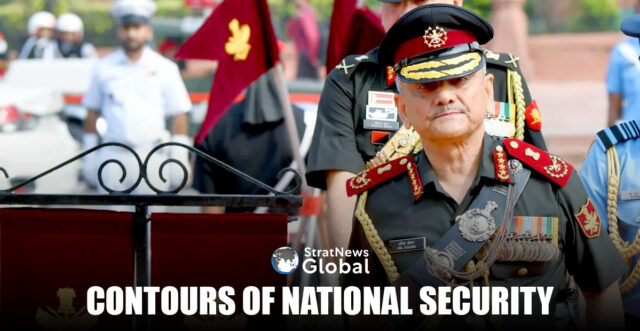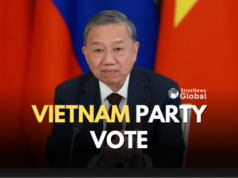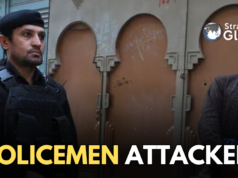“National security is not merely about protecting physical borders; it involves safeguarding the cultural, economic, and social fabric of the nation.”
—NSA Ajit Doval
Introduction
Nation is a concept denoting a common ethnic and cultural identity. It promotes emotional relationships among the people constituting the nation. The notion of a nation is abstract, largely associated with people whereas a country is associated with land, which is tangible. It may also create a bond as strong as that of a nation in people who live in that geography.
The physical attribute of geography being added to the idea of a nation has evolved into the concept of a nation-state. It is a recent construct and is a fusion of a nation with a state. A state is a political unit defined in terms of territory whereas a nation, as stated earlier, is associated with a group of people or a race. A nation-state provides formal recognition and political legitimacy to the geography and the people who reside in it, as a nation. It provides a legal framework for governance for the citizens of the nation-state. The glue that binds a nation is common beliefs, shared history and aspirations of a better collective future. In a nation-state, the aspirational aspect of a better and secure future is performed by structures created for the governance of the nation-state.
The three basic constituents of a modern nation-state are its territory, its people and its ideology. The state is duty-bound to protect all three and it does so by creating various instruments like the armed forces, intelligence organisations, law enforcement agencies, disaster response mechanisms etc besides structures for governance and administration.
The government that presides over the nation-state also identifies issues that will further the cause of its people and its ideology. These can be termed as national interests. National interests can thus translate into aspirations, ambitions and goals which revolve around political, economic, cultural and security needs with national security being the most fundamental. They have a wider perspective and amount to the total of all national values. Core interests are a subset of national interests and are somehow related to the three main constituents of a nation-state.
Aim
The framework that furthers the national interests and mitigates the threats and challenges to a nation-state may be broadly called the National Security Strategy. This article aims to share a perspective on the development of a Strategy for National Security under the conceptual framework of its architecture, ingredients, policy and processes.
Responsibilities Of A Nation-State
The safeguarding of sovereignty and maintenance of its territorial integrity is the first major responsibility of a nation-state. Next is the protection of its people which includes the diaspora residing outside the boundaries of the state. The ideology of a state is a set of political beliefs that lay the blueprint for a social order. In brief, the ideology of a state can be defined in terms of core values that are generally enshrined in the Constitution of the state.
National Security
National Security is the capacity of a state to overcome conventional and sub-conventional threats that endanger its territorial integrity and sovereignty, and the well-being of its people. It also undertakes measures to mitigate the challenges the nation-state may face in future while trying to protect its territory, people and ideology. While the concept of national security was initially predicated around territoriality and defending a sovereign territory from armed aggression, today it includes non-military dimensions like economic security, energy security, food security, cyber security etc. In these domains, the threats posed by other nation-states as well as non-state actors are included. The expanded scope of national security thus includes protection against non-traditional threats like ecology, environment and climate change. Trans-national non-traditional threats like illegal immigration, human trafficking, gun running and narcotics trade are some man-made challenges that can also be included in the ambit of national security.
The threats are imminent. They require immediate action to neutralise. Challenges have a longer gestation period and will require a different strategy for mitigation. Opportunities are difficult to predict but may provide maximum benefit to the constituents of the nation-state. A nation-state should also be poised to seize opportunities that present themselves for furtherance of its goals.
The security of a nation-state involves many facets. Its architecture can be visualised as three concentric circles. The outermost circle addresses the problem of how to secure the nation-state, the middle circle relates to issues concerning the defence of a nation-state and the inner circle denotes the military preparedness of the nation-state. An all-round analysis of these could translate into a National Security Strategy (NSS), a National Defence Strategy (NDS) and a National Military Strategy (NMS). Service Specific Strategies may flow and follow from it. The three concentric circles looking at securing a nation, defending a nation and military preparedness of a nation, seamlessly contribute to each other.
Securing A Nation State
The global security environment is marked by uncertainty and global peace is under more stress than ever before. In an increasingly interconnected world, no nation can remain immune to conflicts and contestations, even if they occur outside national boundaries or areas of interest. The security of a nation-state is a complex enterprise. A state seeks to progressively achieve higher levels of national security, which gives it a continuous and ceaseless character. With the remit of national security being larger, one has to take a long-term view of the global and regional security environment affecting the territory, people, and ideology of a nation-state to secure it.
Territorial Integrity
Human civilisation has evolved over land and disputes over territory between tribes, kingdoms and modern nation-states are a part of our civilisational history. Sovereignty over land is absolute and national boundaries, once recognised, are easy to protect. Sovereignty in airspace is an extension of land and infringements are at best, of a temporary nature. Sovereignty in the maritime domain is nebulous as passage through even territorial waters is not considered an infringement of sovereignty. Extension of the maritime domain to underwater and seabed (minerals and communication cables) complicates the issue of ownership and sovereignty. Open seas and oceans are, of course, global commons for equal use by all nation-states. Space too is considered a global common for use by all. In an interconnected global world, national territories sometimes extend to include overseas (colonial) possessions, occupied territories, and military bases acquired or taken on lease agreements. Economic interests and investments in third countries sometimes affect the food and energy security of the nation leasing the territory, adding a new dimension to national interests vis-à-vis territorial sovereignty. Competing interests of nation-states in third countries complicate matters further. Securing territorial interests may not be singularly achievable owing to the associated complexities and may need partnerships and alliances with other like-minded nations against common challenges or threats, while force structures for maintaining the sovereignty over land, air, maritime and newly emerging domains can be created. Equally important is to develop concepts to maintain national interests in nebulous domains and uncharted territories. It may also extend to the realm of intelligence-sharing networks and organisations for early warning as well as to technologies that help warfighting.
People
The concept of a nation creates an emotional bond between people even if they reside in different states under a different governance system. Their security and safety have at times become a cause of inter-state conflicts. Another extreme of this is people of one state voluntarily working and residing in different countries. Such people contribute to the economic activity and GDP of both nations. The well-being of such nationals remains a matter of concern for the home state of those individuals. The security of the Indigenous diaspora becomes a complex matter when they work for governments of other nations, multi-national corporations and international organisations as they are governed by the policies and rules of that country or organisation. Migration of population and citizenship issues also complicate governance and national security. Protecting the citizens of a nation-state may be simple but providing security to the people of a nation is a major challenge, especially in a globally interconnected world. This will require a creative approach, especially for a country like India which has a large workforce working across the state.
Ideology
Radical ideologies and divergent narratives are creating new fissures in societies and nation-states. Religious, cultural and ethnic fault lines are being exploited due to the immense penetration of internet-driven social media. No nation-state can remain immune to the effects of the rise of radical ideologies, religious sentiments, xenophobic tendencies, separatism and violent extremism. These developments pose significant challenges to modern nation-states and more so to multi-cultural and multi-religious societies and states like India. A democratic society values its citizens more than the state. The ultimate sovereignty of a state rests with the people. Individual identity and ideology were important as a concept but have now found a new voice through electronic and social media. Individual and group ideologies have the potential to disturb the social fabric and are a major challenge to national security for most modern and democratic nation-states. Today it is possible to penetrate networks that control the flow of information and hence target the minds of the people thus weakening a nation-state through influence operations. Such a strategy to weaken a nation being insidious can be run over an extended time horizon. It becomes imperative for a nation-state to create narratives, manage perceptions and carry out social re-engineering, not only for our population but also for our friends, allies and adversaries alike. This is therefore the most complex domain of national security.
The security of a modern nation-state is thus complex and requires more than just mitigating the threats and challenges to its three main constituents. Other important factors that have a major impact on national security are as follows:
• Technology. Science and technology are critical for the development of a nation-state and one of the arenas where its impact is felt the most is war and warfare. It is required not only for the security of a nation-state but also for the socio-political development and economic prosperity of the state. Technological advancements fundamentally reshape national security strategies by enhancing both offensive and defensive capabilities. Innovations in cybersecurity, artificial intelligence, quantum computing and surveillance technologies enable states to protect critical infrastructure and gain intelligence superiority. For instance, Al-driven analytics can predict and mitigate threats in real time, while quantum encryption offers unprecedented communication security. On the offensive side, cyber warfare tools can disrupt adversary networks and operations without conventional military engagement. Moreover, emerging technologies such as hypersonic weapons and autonomous drones redefine strategic deterrence and power projection. Therefore, one has to keep an eye on and continuously scan and monitor the global ecosystem as well as push domestic innovators and technologists to create, integrate and advance technologies, ensuring a balance between leveraging technological advantages and mitigating vulnerabilities.
• Economic Prosperity. It may include issues like energy security, trade, manufacturing and services etc. Gross Domestic Product (GDP) growth again contributes to the security of the state by enhancing the defence budget and ensuring the economic well-being of the citizens. A robust economy attracts foreign investments, which can be leveraged to enhance technological infrastructure and defence capabilities. Strong trade relations ensure access to critical resources and markets reducing vulnerability to economic coercion. Manufacturing growth not only creates jobs but also establishes a resilient supply chain for defence materials, diminishing reliance on imports. The services sector, particularly in technology and information services, fosters innovation essential for modern defence systems. Overall, sustained GDP growth enables a nation to allocate greater resources to its defence budget, thereby enhancing military readiness and the welfare of its citizens.
• Partnerships and Alliances. Historically, like-minded nations have aligned together to face common threats and challenges or to serve the larger interests of a nation. These have generally evolved into formal treaties that are legally binding as per the terms agreed upon. Partnerships may not have a binding security or military dimension attached to them but convey a general convergence of national interests. In an interconnected global world, nation-states look at collective security, whether economic or military. The European Union (EU) and the North Atlantic Treaty Organisation (NATO) are examples of treaty organisations. Nonalignment is an alternate means to provide security to a nation-state, especially in a world that is divided into major power blocs. Formal alliances do impinge upon the sovereignty of a state and hence there is a tradeoff between the nature of security a state may seek vis-a-vis the sovereignty it is ready to surrender.
• Arms Control and Disarmament. Chemical, biological, radiological and nuclear (CBRN) threats affect the whole human race. These global threats impact international security and as its subset, the national security of a nation-state. Issues like the proliferation of WMD technologies and the possibility of these falling into the hands of non-state actors further add to the security challenge. Cooperation between states in military matters, especially in the realms of elimination, reduction and limiting of such weapons will result in a cooperative security regime with regulatory means to thwart such security threats. An alternate view on arms control is that it is a means to deny a capability that few nation-states have already weaponised. A nuanced view of arms control and disarmament is hence needed.
Defence Of A Nation State
It is a subset of National Security with its remit being larger than the application of military force. It looks at instruments that may defend the nation without the application of military force and strategic planning for the application of military force if it has to be used. Apart from tangible instruments of power, there is an abstract element of developing a strategic mindset amongst the citizens of a nation-state. There can be many lines of action through which one can enhance the capability of a state to defend itself. A few of these are being discussed in subsequent paragraphs.
Capability Building And Sustenance
The efficacy of any armed force depends on two basic requirements. These are the sustenance of the force to counter present-day threats and capability building for future challenges. While sustenance voids may have to be made up through the import of weapons, ammunition, spares and equipment, the capability building should preferably be indigenous. This will insulate the nation-state against any disruptions due to global geo-political events or even pandemics like COVID-19. Till the time indigenous capabilities are developed, a nation-state may have to resort to striking a balance between imported and indigenous technologies and equipment, ensuring that adequate stocks are maintained at all times to cater for a prolonged conflict or to ensure a timely surge in capacity.
Defence Research And Development (R&D)
For the indigenous capacity building to take place, there will be a requirement for indigenisation of import substitutes and innovation when it comes to the development of new products, systems and technologies. Defence R&D will be vital for both. Nation-states will have to resort to partnerships and joint ventures with foreign equipment manufacturers to obtain technologies for indigenisation. It will serve the dual purpose of achieving self-reliance and also reduce the import burden, thus giving more opportunities to a nation-state to sustain itself. Indigenisation in Defence is critical to national security as it keeps the technological expertise intact and encourages spin-off technologies which lead to innovation.
For innovation, the user, the academia, the private industry and the government will have to collaborate towards technology development. Such technologies developed indigenously, being tailor-made, will yield better chances of success.
Defence Manufacturing
A technologically strong and resilient manufacturing sector is vital for Defence and national security in more than one way. Without the domestic sector having the capability to produce strategically important defence equipment, the ability of the nation to defend itself will be vulnerable to foreign influence. Critical infrastructure, advanced technologies, applications and other such strategic industries also rely on a strong domestic manufacturing base for economic stability and security.
It also ensures the resilience of supply chains and logistics. When considering the defence and security of a nation, it is important to invest in cutting-edge technologies to keep manufacturing competitive, resilient, efficient and secure. A strong and proven defence manufacturing sector will be capable of providing support to other desirous and friendly nations too. Defence exports will thus generate revenue for the nation’s economy, which has an impact on national security.
Defence Diplomacy
Defence diplomacy does not have a universally accepted definition, which allows nation-states to modify and utilise it for their own security needs. It is referred to as a ‘Powerful Tool of Statecraft’ and describes the nonviolent use of military force to achieve national objectives by conducting activities like training exercises, the establishment of training teams for the capacity building of the host nation, cultural exchanges, etc. In recent years, defence diplomacy has developed as a significant player on the global politico-military stage to create partnerships, strengthen ties with allies or demonstrate one’s might to an adversary. It contributes to the shaping and implementation of the security policy and foreign policy of nation-states.
Strategic Culture
Every nation has its own set of decision-makers, be it from the government, the military or a mix of both. Strategic culture is the set of beliefs, customs and traditions held by these strategic decision-makers about the political objective of war and the most effective ways of achieving it. It decides how the nation-state utilises its resources to meet its end goals. The citizens and the society in a nation must understand the importance of security in all its dimensions, be it external, internal, economic or social. A Strategic Culture will have to be created in the nation to create awareness among the people on the whole of nation’ approach that is sine qua non to counter emerging challenges.
Defence Budget
The security paradigm for a nation-state has to be constantly reviewed in light of the threats and challenges which keep evolving. The defence of the nation is ensured by a strong, modern and capable army which is equipped to respond to any and every contingency that the nation may have to face. The defence budget is utilised for sustaining and provisioning the current force as well as for its capability building.
Civil-Military Fusion
This ensures the optimal utilisation of civil and military resources to achieve national objectives. It fuses military professionalism with political ideologies. The infusion of state-of-the-art technologies across multiple domains lends further credence to the concept of civil-military fusion.
The development of dual-use technologies and infrastructure optimises resources. Civil-military fusion is paramount for the security of the citizens during Humanitarian Assistance and Disaster Management operations.
Military Preparedness
Military security is the capability of a nation-state to deter aggression and defend itself. A nation-state also can enforce its policy choices through military force. Both need military preparedness, which lies at the very core of the three concentric circles that have been discussed earlier. Just like the strength of the entire structure is based on the strength of the core, the strength of national security, the foundation of defence of a nation, depends on the strength of its military preparedness. In a democratic setup, the military is always an instrument of last resort. The military should, therefore, never fail. Military preparedness primarily remains a function of the Armed Forces which are entrusted with the responsibility of preserving the territorial integrity and protecting the people and the ideology of the nation-state. They have to have both the deterrence value as also the capability to wage war if needed. Commencing with the development of strategies, concepts and doctrines, military preparedness progresses to ‘force generation’ and creates options for ‘force employment’. The ambit of military preparedness, however, spreads beyond the preparation or conduct of war. Some important aspects are:
• The Armed Forces are responsible for the safety of the national diaspora when they are outside the geography of the nation.
Evacuation of these citizens from a warzone or conflict zone is undertaken by the armed forces. Such operations are called NonCombatant Evacuation Operations and need specific capabilities which the military must be prepared for. It also needs cohesion between the diplomacy and the military.
• With an increase in connectivity, nation-states today have their economic interests based outside their geography. These can be related to trade, investment hubs, oil and gas exploration sites on the High Seas and so on. Whenever a direct or indirect threat manifests to such interests, nation-states resolve to utilise the armed forces to secure them. Escorting of ships, naval patrols, and anti-piracy missions are some of the tasks that the Armed Forces carry out as part of securing the nation’s economic interests, with ‘Economic Diplomacy.
• Nation-states conduct their inter-state relations through Coercive Diplomacy with the intent of achieving political objectives and fostering national interests without having to wage war. Threatening the adversary with possible consequences is unlike conventional military strategy and is led by clear communication, signalling and bargaining to leave no doubt related to intentions and motives. The key variables in such actions are the balance of power in favour of the coercing state and the retention of control on the escalatory matrix. Military preparedness is thus vital for coercive diplomacy to be adopted by a nation-state.
• Another means that is adopted by nation-states, which rests heavily on the military preparedness of this state, is a show of force, which is a warning to an adversary, or a means to intimidate it, by displaying a capability. This can be carried out by carrying out test firing of weapons, training exercises close to the border or decapacitating the adversary’s systems for a specific period.
Military preparedness will also be important in understanding how combat is evolving with the advancements in technologies and the emergence of new domains of warfare. The evolution of tactics to counter the envisaged methods of warfighting will also play an important role in deciding a nation’s military preparedness. Force structures, duly supported by associated doctrines and concepts, will need to be created to give the Armed Forces the capability to respond to future threats through Multi-Domain Operations.
National Security Strategy
The original understanding of strategy was related to the military application of force. Largely it meant positioning of military forces to arrive at a favourable decision and, by application of military force, if the disposition itself does not lead to a favourable outcome. It was also referred to as ‘Art of the General’. Strategy now has a wider understanding. It is the effective utilisation of resources to achieve the desired outcome and is used by companies, corporates, business houses and even universities. It links Ends and Means with Ways. Today, we can have a strategy for economic security, for development of education and infrastructure development. The private sector may have a strategy to overcome competition from peers and rivals.
No nation can secure itself without a strategy in place. The important constituents of a strategy would be Policy, Processes and Organisational Structures. I believe that India has all these functioning efficiently. India encountered the challenges of COVID-19 from zero preparation level to a nation acting in unison to propagating ‘Vaccine Maitri’. It would not have been possible without all these being effective. Abrogation of Article 370 and bifurcation of the state of J&K into two union territories would not have been possible without all these elements that constitute the National Security Strategy and the basic security architecture being in place. Today, surgical strikes, multi-alignment, and Atmanirbharta are part of a strategy to secure the nation. It is possible because all organisational structures, processes and policies are in place. The resounding success of G-20 in the same manner promotes national interests, contributing to national security.
Strategic analysts and political pundits in India and abroad often have been found stating that India does not have a national security strategy. That is incorrect and a myopic understanding of the issue. What we don’t have is a written document called the National Security Strategy, which is published periodically by some Western nations. Israel, the most threatened nation on earth, does not have a written policy document/ National Security Strategy. On the contrary, Pakistan issued a written National Security Policy in 2022 and soon ran into economic problems, political instability, rift between the Armed Forces and the citizens and problems on its western borders. They had the written document but lacked the organisational structures, processes and policies to secure the nation.
As we look towards the organisational structures responsible for national security in India, the National Security Council (NSC) is at the apex. Headed by the Honourable Prime Minister with the National Security Advisor (NSA) as a Secretary. It oversees both internal and external security about conventional and non-conventional threats, military affairs, space, cyber and technology. The National Security Council Secretariat (NSCS) functions under the aegis of the Prime Minister Office (PMO) and is responsible for national security planning and coordination in the political, economic, energy and strategic arenas. It addresses current security threats, identifies emerging security challenges and then plans to build up capacities and resources to address these. It has three tiers.
The processes are steered through various committees like the Strategic Policy Group and Defence Planning Committee (DPC) which function under the chairmanship of the NSA. Other enabling committees include the Defence Acquisition Council which is headed by the Honourable Raksha Mantri and the Chiefs of Staff Committee to coordinate on the policy front for all tri-services military matters.
Conclusion
India aspires to be a developed nation on the centenary of its independence. National security, already complex will present a more complex mosaic in the future.
A conceptual framework of national security is essential for goal and role clarity among all those responsible for securing, defending and protecting the nation. There is also a requirement for military officers to understand the larger dynamics of national security without diluting the military preparedness aspect. The article only defines the conceptual framework of national security. The mosaic has to be filled with threats and challenges that we may face from our adversaries on the borders, in IOR, in space and in cyber domains. From the rising threat of terrorism and radicalisation on one end to the weaponisation of sanctions and the use of information as a weapon are major challenges that need to be dealt with.
(Excerpted from ‘Ready, Relevant and Resurgent: A Blueprint for the Transformation of India’s Military’. The author is India’s second and current Chief of Defence Staff.)
The author is India's second and current Chief of Defence Staff





